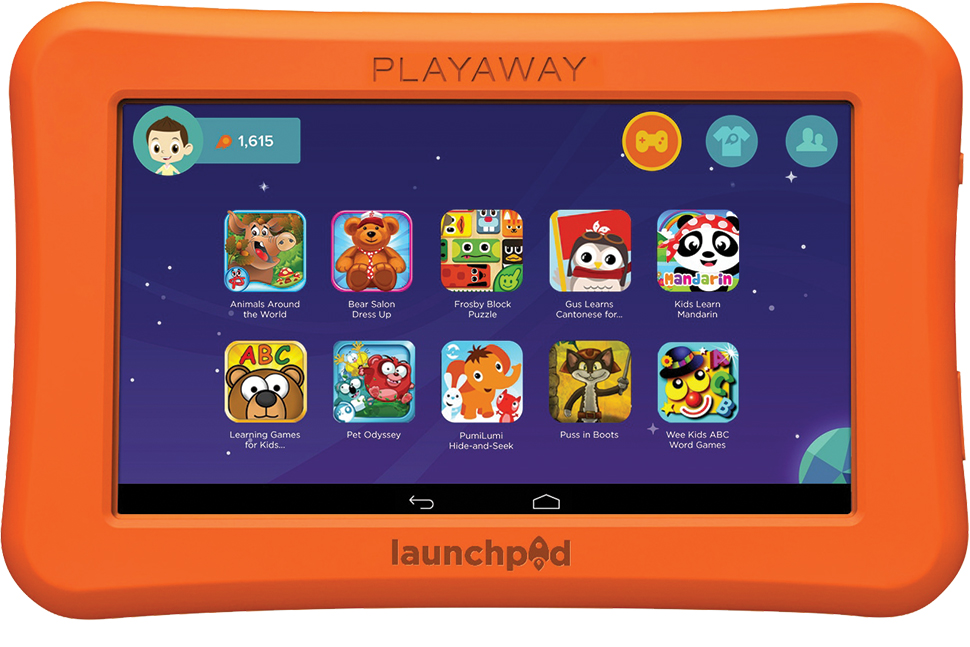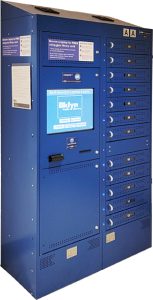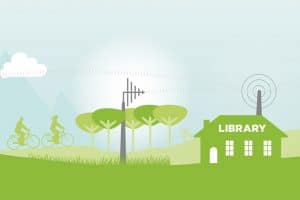
For people who don’t have digital devices at home, accessing critical information can be difficult. As a result, many libraries now lend equipment to increase internet access and help close the digital divide. Tablets and laptops—whether for in-library or home use—allow users to gain computer skills, take advantage of learning resources, and increase digital literacy. We recently talked with workers from three libraries that offer self-service tablet and laptop lending and preloaded tablets with educational apps.
Launchpad

User: Rebecca Colbert, head of collection and bibliographic services, Las Vegas–Clark County (Nev.) Library District
What are Launchpads? Launchpads are tablets with preloaded educational apps and games, produced by Playaway. They enable digital learning without the need for Wi-Fi or internet access. Each tablet is for a different educational level and subject area, such as language, motor skills, math and science, and social and emotional literacy.
How do you use Launchpads in your library? Las Vegas–Clark County (Nev.) Library District (LVCCLD) introduced 1,050 Launchpads in early 2022 as another way to bridge the digital divide. Lack of access to Wi-Fi and internet are huge barriers to early learning for low-income library users. We selected content from the Pre-K Academy and the Reading Academy, as well as all their Super Packs, which are tablets with twice as many apps. Each tablet is fully cataloged and available for checkout at all 25 LVCCLD branches.
Fewer than 40% of Clark County 3- and 4-year-olds are enrolled in preschool. Launchpads help children who don’t have digital access learn technological basics. Because they work without Wi-Fi access, they can become like a personal electronic device at home, in a bus or a car, or anywhere on the go.
What are the main benefits? It’s fantastic that these devices do not require internet access or Wi-Fi. They are also durable, with a rubber bumper and a locking case, so we can place them on the shelves and in the holds-pickup area for independent access without worrying that they will be damaged. Launchpads are also fun for staffers to demonstrate. The range of tablet content is designed for ages 2 through adult, although our collection focuses on the under-10 group.
What would you like to see improved or added to the system? I think ESL content or bilingual Spanish/English content would be helpful for our second-language patrons.
Hublet

User: Silvia Christy, assistant library director, Seguin (Tex.) Public Library
What is Hublet? Hublet is a self-service tablet station that allows libraries to lend tablets to patrons for use in the library. It allows users to access the internet and digital content in a mobile format and supplements the public computers available for internet access.

How do you use Hublet in your library? We lend tablets as easily as books, without any staff intervention. Using the Hublet station, someone can check out a Samsung tablet that provides internet access and is preloaded with curated digital content and resources including subscription databases, free online resources, games, and social media apps. The tablets include different profiles based on age, with apps and programs appropriate for children, teens, and adults. The devices and the checkout process are user-friendly, so minimal training is required.
What are the main benefits? Very little assistance is needed from staffers after they explain how the kiosk works. Children enjoy checking them out on their own. Another benefit is mobility: Patrons can check out tablets and use them anywhere inside the library. We’ve seen increased demand for tablets for Zoom meetings for use in our study rooms. Additionally, users’ data privacy is protected—information is wiped from tablets after devices are returned to the kiosk. Plus, the tablets are tied to the library network, so if a customer walks out of our building with a tablet, the device is disabled automatically.
What would you like to see improved or added to the system? I would like to see a bigger screen interface on the kiosk so it’s easier for people to see prompts. On the library back end, I would like a more user-friendly interface that makes adding and removing apps, links, and resources more intuitive.
ComputeIT


Users: Gary Conway, manager of technology support, and Selvon Smith, chief information officer and vice president of information technology, Brooklyn (N.Y.) Public Library
What is ComputeIT? ComputeIT is a self-service kiosk for dispensing devices to patrons. It’s a modular locker that safely stores, charges, and issues laptops or other devices via a user-friendly interface. It can also be customized with branding—ours is Brooklyn Public Library blue. It’s accessible for all ages, and there’s even a feature where you can designate the center lockers for people who can’t reach high or bend low.
How do you use ComputeIT in your library? Patrons come in and check out a laptop with their library card. The system integrates with our library management system to verify that they’re valid users. Information on the screen explains the checkout period and the rules and regulations for laptop use. Lights next to each locker tell you if a device is in there and, if it is, whether it’s charging or ready to go.

What are the main benefits? In some neighborhoods where there’s huge need for technology devices, our branches have only a small amount of space for computers that are wired. There’s no way to expand other than to have a kiosk like this. At our Coney Island branch, we were able to go from eight computers to 24 with ComputeIT. Another benefit is the reduced staff involvement.
What would you improve or change about the system? The system for our public desktop computers allows patrons to queue for the next available computer. We’d like a similar module to integrate into ComputeIT. In situations where all the laptops are charging, we’d also like some indication on the screen of how long it will be until the next one is ready.


